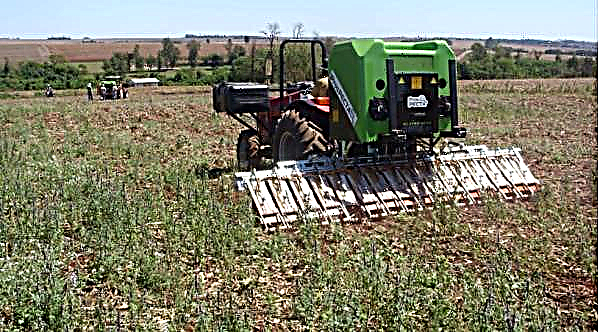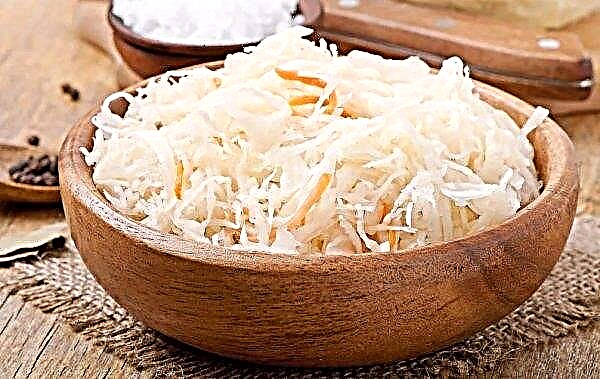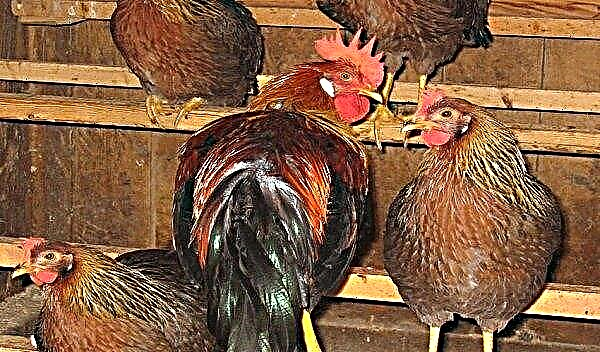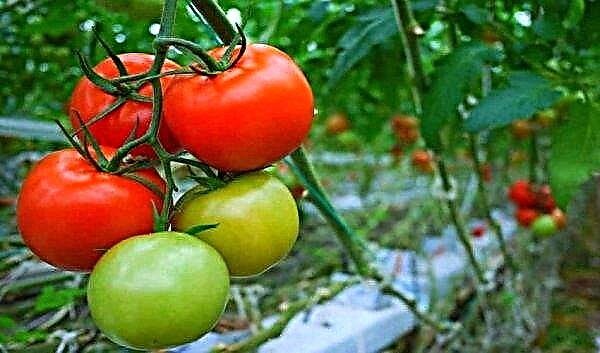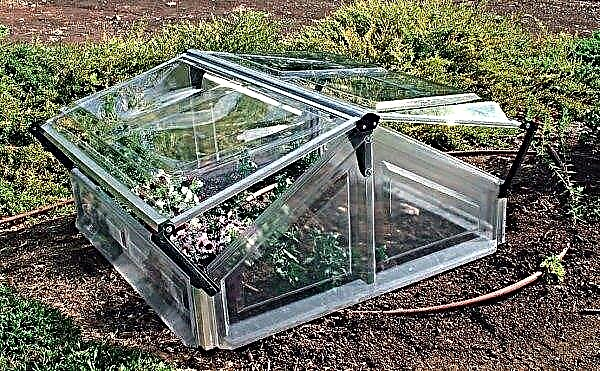Potato nematode is a serious pest, the insidiousness of which is the inability to know if a vegetable is infected or not before harvesting begins.
Description and types of pest
Before you begin the fight against parasites, you need to find out what it is and how it looks. Nematodes are parasitic, microscopic, heterosexual, cyst-forming worms. After mating, cysts are formed, filled with unripe larvae. Such cysts can be in the ground for up to 20 years in anticipation of favorable conditions.
Spread with affected soil, sewage and wind.
Three types of potato nematode are known:Did you know? The potato nematode was first introduced to Europe in the 1880s.
- Golden. When this species is afflicted, the leaves become yellowish, the plant lags significantly in growth, develops many additional roots, and practically does not form potato tubers themselves.
Video: Golden Potato Nematode
- Stem. During the growing season, there are no visible signs of damage. On infected tubers, it is possible to see the defeat closer to the fall or, generally, after harvesting. The disease looks like cracks or spots on the tubers.
Video: Stem Potato Nematode
- Pale. Symptoms of infection of potatoes look the same as with the defeat of the Golden Nematode. Leaves begin to turn yellow, little tuber is formed, or they are completely absent.
Video: Pale Potato Nematode
This disease has the general name potato globoderosis.
Signs of occurrence
The signs of the onset of the disease are not specific.
Symptoms are similar to those that appear with a lack of water or nutrients:
- growth slows down;
- leaves turn yellow early;
- flowering is delayed;
- the root system becomes branched.

Methods of control and treatment
The fight against potato nematodes involves various agrotechnical and chemical agents. On private farms, folk methods of struggle give good results. The choice of method depends on the degree of soil contamination and the type of farm.
Agrotechnical
These methods are the most accessible and environmental.
These include:
- the introduction of organic fertilizers;
- weed control;
- alternation of planted crops;
- selection of optimal planting and harvesting time for potatoes.
Important! In the area of severe damage, it is recommended to destroy crops by digging and further burning. Inventory and soil must be disinfected.
When growing potatoes on seed, you can use false crops, when planted potatoes are destroyed after the larvae got into its root system and have passed the second stage of development. This method helps to protect up to 80% of the seed material from infection.

Chemical
Plant parasitic nematodes are most vulnerable during their active phase in the soil when searching for the roots of host plants. Chemical control methods are most often used in large farms, where there is special equipment and trained personnel. These include soil treatment by fumigants, which, getting into the respiratory organs of the parasite, lead to its death.
Fumigants should be applied to the soil at a temperature of + 12 ° C to + 15 ° C because the dispersion is related to temperature. Chemical preparations help to establish a high level of control. This is especially important when growing potatoes for export.
Important! When processing fumigants, safety precautions should be observed, since drugs of this group can be harmful to human health.
Folk remedies
How to deal with this pest has long been known among the people. The most affordable folk remedy is the planting of marigolds next to potato beds. The substances that they secrete adversely affect the pest and contribute to a significant reduction in the population.
Almost completely get rid of parasites is possible with the help of boiling water. To do this, pour the area with hot water (not lower than + 60 ° C) to a depth of about 20 cm. This method is used if there is little damage or in single foci.
Preventative measures
As a preventive measure, planted crops on the site should be changed. If this is not possible, varieties resistant to this pest should be planted periodically.
It is necessary to make fertilizers on time, because strong plants are more resistant to the disease.
It should be borne in mind that soil samples will show a positive result only with a high degree of soil contamination. Also, not all types of nematodes can be detected during the growing season. Therefore, preventive measures should not be neglected.
Did you know? If you harvest potatoes in 50 days, the nematode will not have time to complete its life cycle.
Nematode-resistant potato varieties
Planting varieties of potato resistant to a nematode is one of the methods of prevention. There are early, mid-early and mid-late varieties.
Early:
- Rikea;
- Poran;
- Povenov;
- Rosara;
- Pushkin
- Uladar
- Dnipro;
- Felox;
- Fresco;
- League
- Believe me;
- El Mundo;
- Ivory Russell;
- Axenia;
- Alova;
- Bellarosa.
Medium Early:
- Aurora;
- Ryabinushka;
- Levada
- Svitanok Kiev;
- Dobrochin;
- Aubrius.
Mid-late:
- Banaf
- Inspiration;
- Black grouse;
- Crane;
- Vectar Belarusian;
- Ruta;
- Volare;
- Lucinda;
- Ragneda;
- Sifra.
Danger and harm to humans
Potato nematode is not a danger to human life.
It is quite difficult to deal with glauberosis. Therefore, preventive measures should not be neglected. Although this disease does not directly harm a person, it can significantly reduce yield, which, in turn, will affect profitability.






